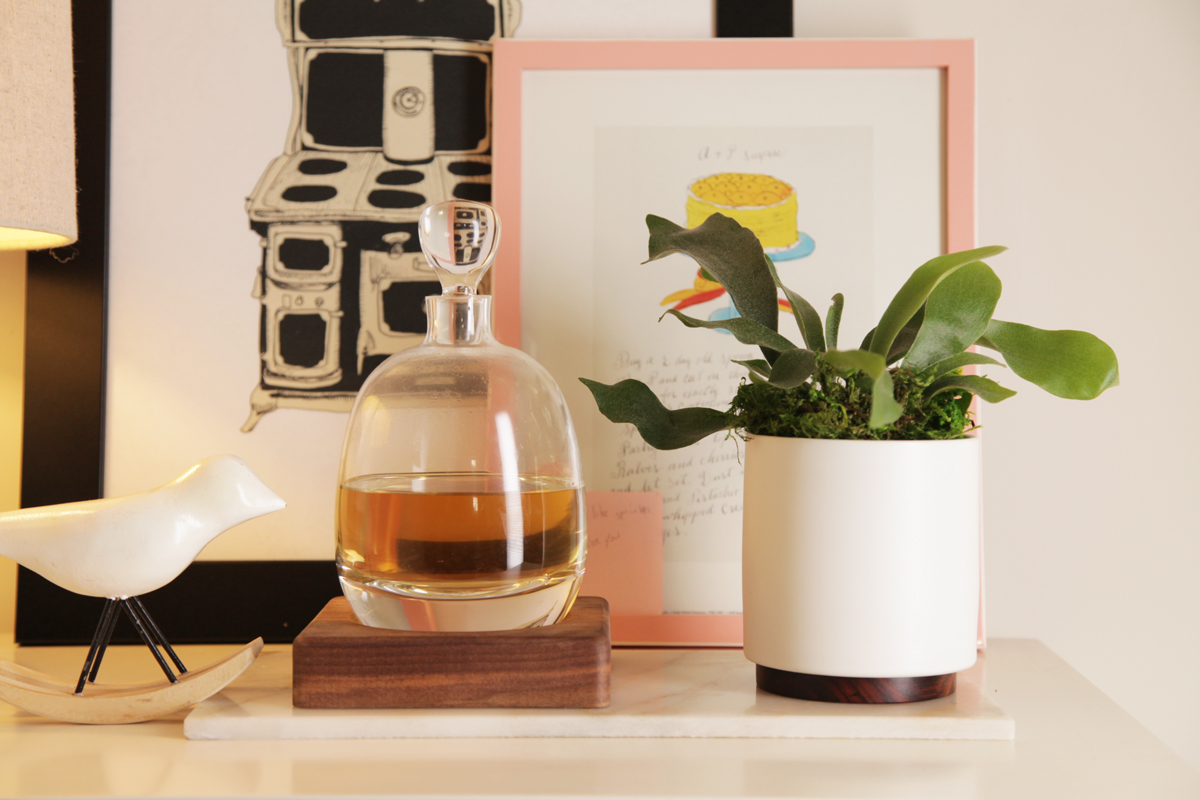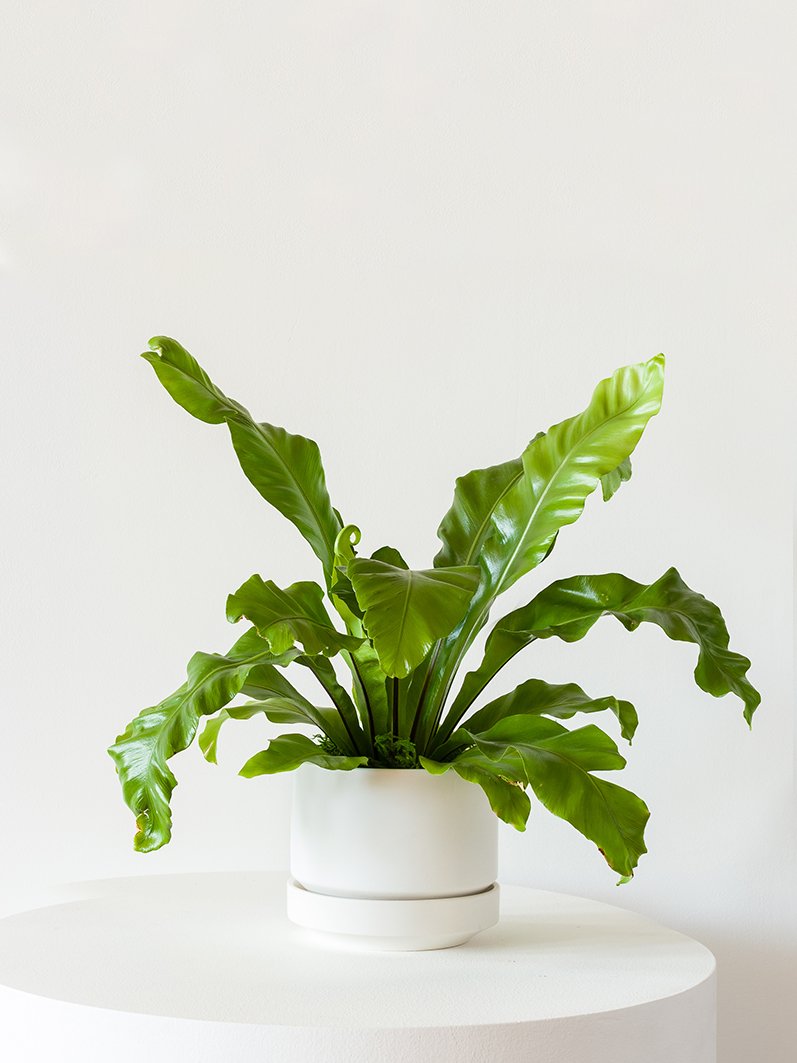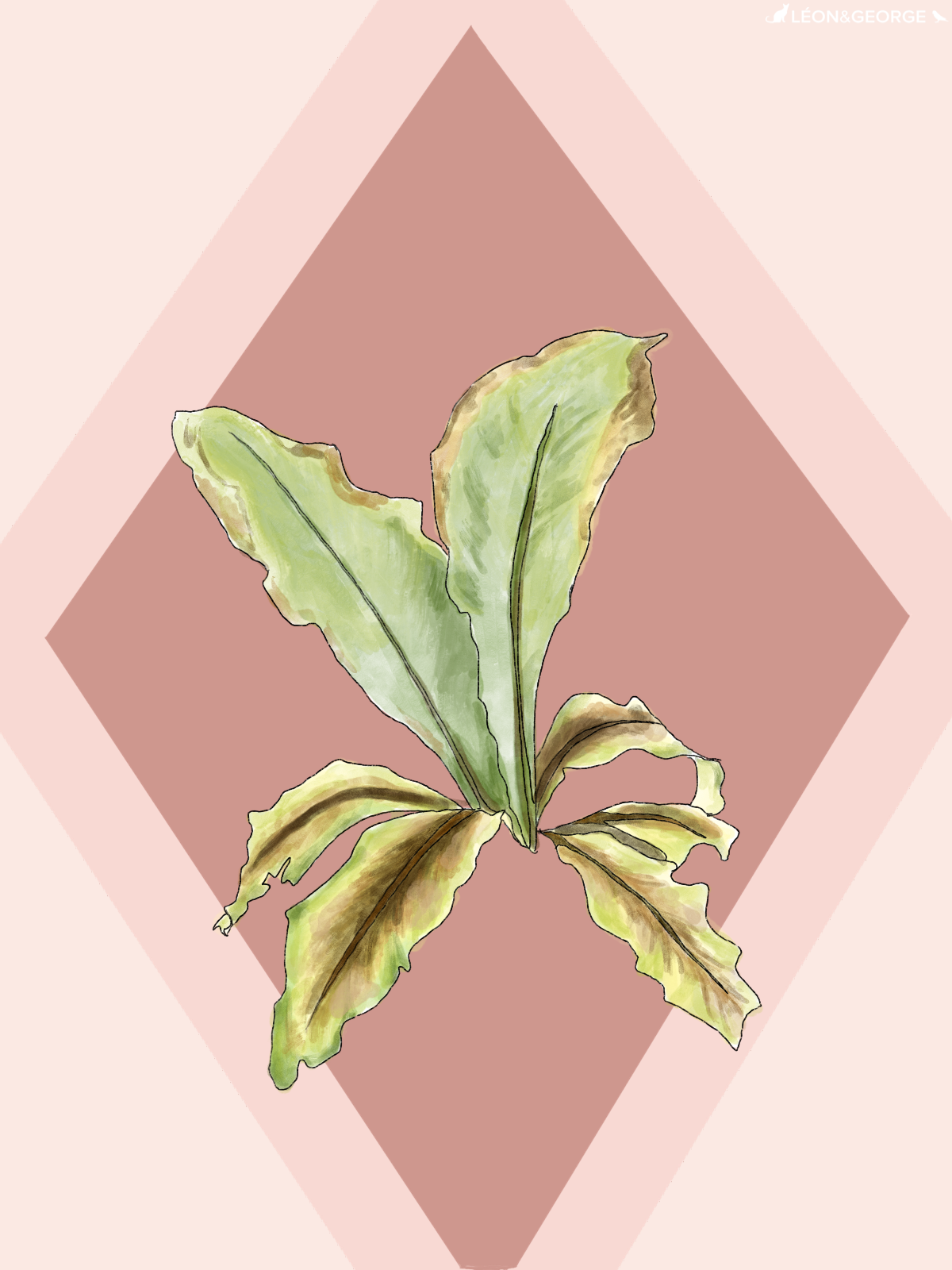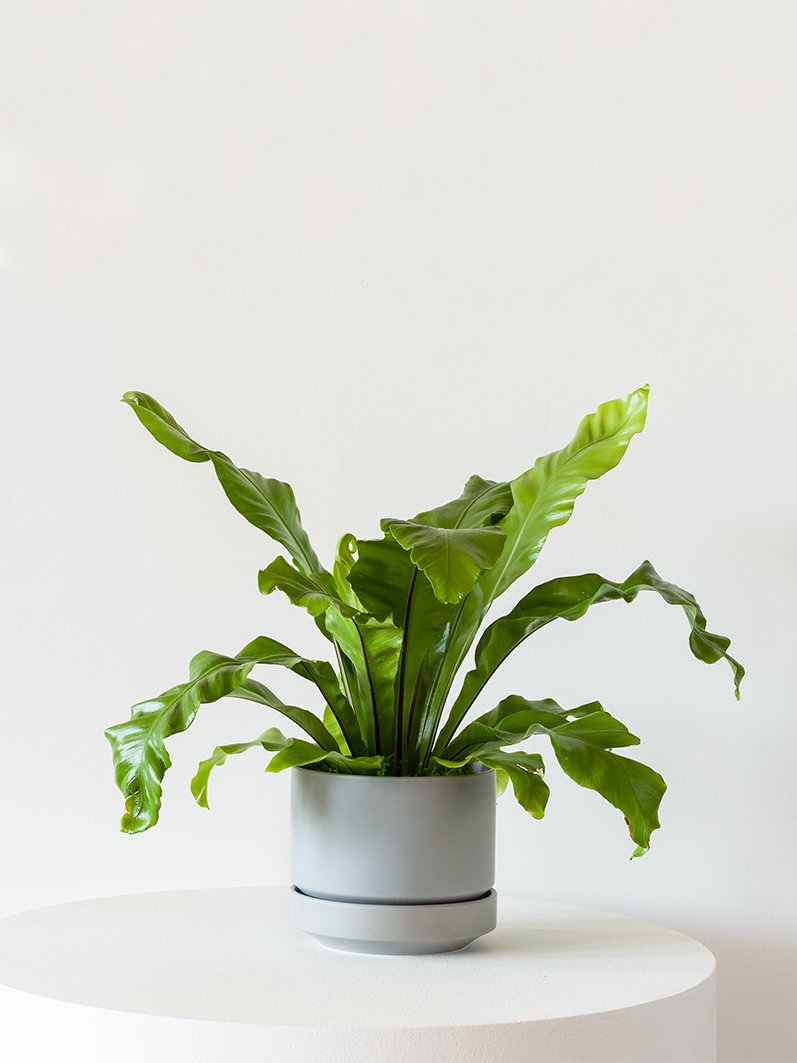Looking to bring a Staghorn Fern into your life? With sage green, velvet like fronds, these gorgeously unique plants are popular for good reason. Easy to care for but with a few quirks, read up on what makes the Staghorn Fern so special, and how to select a perfect fern for your home.
What is a Staghorn Fern?
Staghorn Ferns, or Platycerium bifurcatum, refers to a commonly cultivated group of ferns in the genus Platycerium. Staghorn Ferns are epiphytes, which means that in the wild, they grow on other plants and objects for support, such as on tree trunks or branches. Other examples of common epiphytic indoor plants are hoyas and bromeliads. Uniquely, the Staghorn Fern doesn’t even require soil to grow at all -- in fact, it requires stable support to reach its mature stage, and absorbs most of its nutrients from the air rather than its soil.
Staghorn Ferns can thrive indoors or outdoors, and are particularly well-suited to grow outdoors in humid, warmer climates. But that doesn’t mean you can’t enjoy one of these beauties in your home! Their jagged fronds (fern leaves) make for stunning statement pieces in a variety of interior and outdoor spaces, especially when mounted.
Many plant collectors choose to mount their Staghorn Ferns, which creates a beautiful display reminiscent of moose or deer antlers in the home. This is how they got their common name, and are also often referred to as “Elkhorn Ferns.” In ideal conditions, these gorgeous horticultural oddities can grow up to several feet tall and wide and create a massive, unique focal point in any room or patio. These showpiece houseplants are truly a work of art, especially if it is on your wall!
Staghorn Ferns Need More Light than Most Ferns
Many people think of ferns as a low-light houseplant, but remember that Staghorn Ferns uniquely require more sunlight than most ferns. Put your plant near a good light source, such as an east-facing window or near a skylight.
Another excellent placement option for the Staghorn Fern is the bathroom! When placed in a well-lit bathroom in an indirect sunny spot and periodic humidity from the shower, you may find that your Staghorn Fern grows surprisingly quickly.
They love a humid environment
Staghorn Ferns grow natively in tropical parts of Australia and other parts of Oceania, thriving in these warm, humid environments.
Unlike many other common houseplants, these plants absorb moisture and nutrients through its fronds. Both its basal fronds and front, more prominent fronds, sometimes referred to as “antler fronds” because of the resemblance to deer and elk antlers, are able to absorb water and nutrients. This makes them an ideal candidate for periodic misting between waterings.
To keep your Staghorn Fern thriving, ensure you’re accounting for misting in your watering schedule and avoid overwatering your plant!
Indoors, Staghorn Ferns Need Fertilizer
Staghorn Ferns are hearty plants whose older, browning leaves serve as mulch-like nutrient preservers as they break down on the plant. In their tropical environments, they are able to absorb nutrients from the moist rainforest air to help them thrive, but this is not possible in the home. For that reason, a natural fertilizer is a prudent choice to keep your Staghorn Fern healthy and happy.
Like with most houseplants, use fertilizer conservatively and only during the plant’s growing season. Staghorn Ferns enjoy monthly or bimonthly doses of diluted liquid fertilizer to prompt growth during the warm summer months. Some people report good results utilizing another ingredient you already may have in your compost pile -- banana peels! These potassium-rich resources can serve as a cheap and natural source of nutrients as they decay over time.
Understand your plant’s natural habitat
A common problem that leads some people to fail in Staghorn Fern care is underestimating the plant’s light requirements. Most ferns grow in the ground level of the forest, and it’s these darker, moist environments that we usually think of when we buy ferns. But the Staghorn Fern prefers significantly more light than other plants in the Polypodiaceae family, so make sure you have an indirectly sunny spot for this unique fern.
While relatively unfussy plants, Staghorn Ferns can also be susceptible to common pests, such as spider mites and scale. To treat this, simply do so as you would any other houseplant, such as with neem oil or another natural pest deterrent. Avoid overwatering your plant to proactively prevent pests from turning your houseplant into their home.
You Should Eventually Mount Your Staghorn Fern
Once your Staghorn Fern is mature, it will require mounting to continue its growth. Young Staghorn Ferns can thrive wonderfully in a ceramic or terracotta pot with a chunky soil mix, but after a year or so, it will do best in an arrangement that takes its fascinating epiphytic habits into account, such as mounted on a wooden board, piece of bark, or even in a kokedama (beautiful Japanese moss balls) arrangement. You can choose how to mount a Staghorn Fern based on your own style and preferences, but it’s easy to do with supplies you may likely already have around the house.
How to mount A staghorn fern
To mount your plant, remove your plant’s root ball from its pot, removing some of the excess soil, and wrap it securely into some sheet moss or other organic substrate. Using twine, fishing line, or a combination of each, affix the plant onto your board or chosen mounting material. Some people choose to use nails and wrap the string around the nail heads, or wrap the plant directly. Either way, once your Staghorn Fern is established and settled onto its board or another source of support, its roots secure the plant in place.
Staghorn Ferns are safe for children and pets
Worried about furry friends or small humans getting into your plants? Staghorn Ferns are nontoxic, making them a great houseplant option for homes with cats, dogs, or young kids.
Staghorn Ferns Propagate Easily
Staghorn Ferns generate offshoot “babies,” which can be propagated into an organic substrate like moss or coco coir and eventually grown into a gorgeous, large Staghorn Fern.
They’re Furry!
Ever wonder what makes the foliage so special on a Staghorn Fern? The velvet-like fronds of this plant actually have a purpose! The tiny, silvery hairs help protect them from insects and pests in the wild (and probably in your home, too!).
Discover the Staghorn Fern
Staghorn Fern: an gorgeous epiphyte for a pot or wall.








